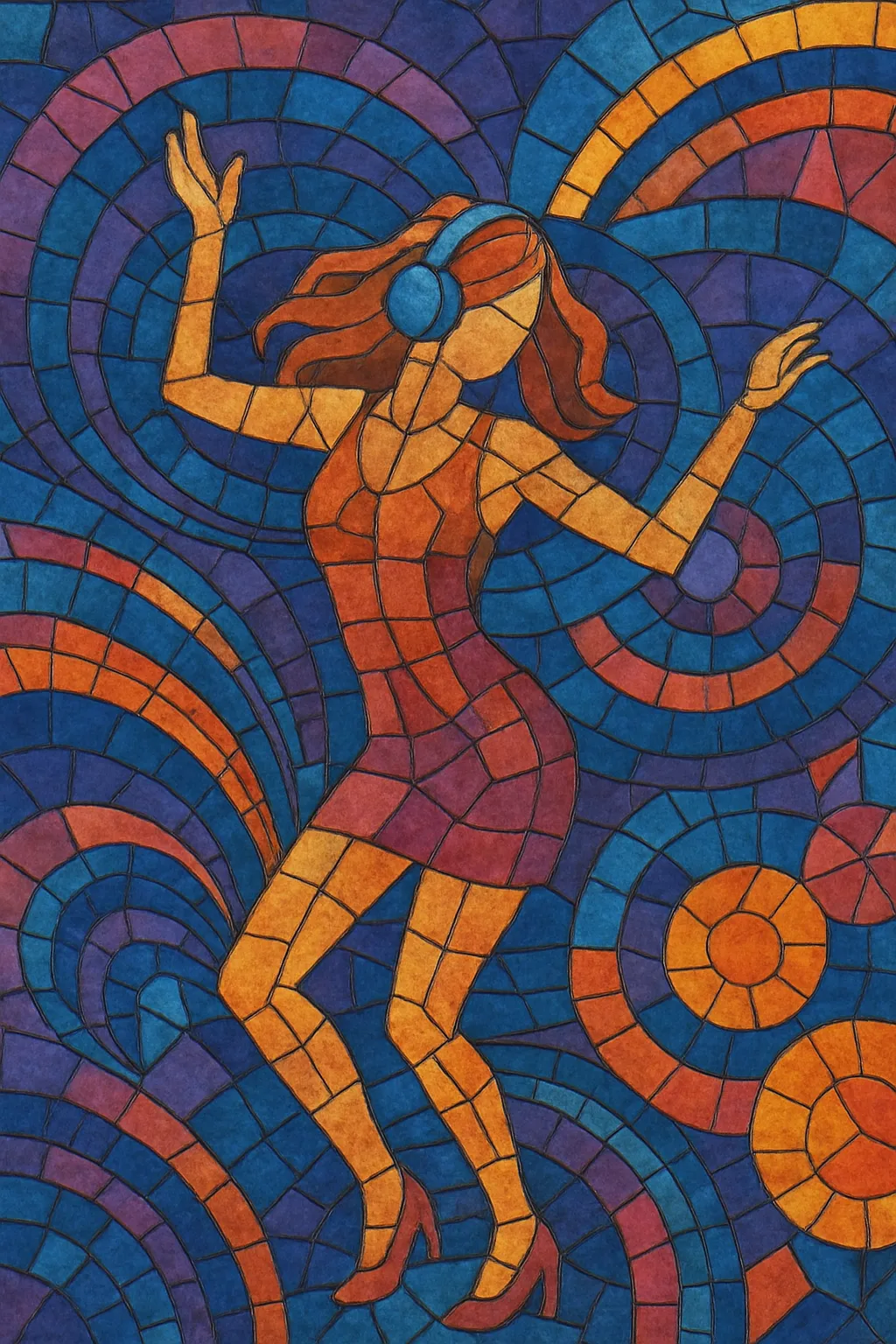Dance-pop is a mainstream-oriented pop style built for both radio and the dancefloor. It blends hook-driven songwriting with club-ready rhythms, typically using a steady four-on-the-floor kick, bright synthesizers, and punchy, polished production.
Tempos usually sit in the 110–128 BPM range, and arrangements emphasize memorable choruses, clear verses and pre-choruses, and concise structures suitable for radio edits. Compared with club genres like house or techno, dance-pop prioritizes song form, vocal presence, and accessible harmonies, while still retaining an energetic groove.
The sound palette often includes layered synths, sampled or electronic drums, tight bass lines, ear-catching toplines, and modern production techniques such as sidechain compression and stacked vocal harmonies.
Dance-pop emerged at the turn of the 1980s from the ashes of disco and the rise of post-disco club music. It fused disco’s steady dance pulse with pop’s concise songcraft and earworm melodies, drawing crucially from Hi-NRG, boogie/post-disco, and synth-pop. In the United States, artists like Michael Jackson bridged disco and pop spectacle, while Madonna, producers like Jellybean Benitez, and the MTV era cemented dance-pop’s image-forward, hook-centric formula. In the UK, the Stock Aitken Waterman production team turned danceable synths and drum machines into mass-market hits, laying a blueprint for modern dance-pop production.
During the 1990s, dance-pop absorbed Eurodance energy and bright, synth-forward textures, while maintaining shorter radio formats and strong vocal hooks. Acts and producers across Sweden, the UK, and the US refined the formula: glossy toplines, major-key choruses, and polished, club-aware beats. Girl and boy groups, as well as solo stars, brought dance-pop aesthetics to a global teen audience, aligning the genre with pop superstardom.
The early 2000s saw a sleek, international sound: crisp sidechained synths, tightly quantized drums, and catchy toplines. House and trance flavors infiltrated charts, and dance-pop increasingly partnered with superstar producers and DJs, turning nightclubs into proving grounds for radio hits. By the late 2000s, the genre was firmly dominant on global charts, with high-impact choruses and club-derived drops.
EDM’s festival aesthetics—big builds, brighter leads, and impactful drops—merged with dance-pop songwriting, yielding massive crossover hits. Swedish and American production houses streamlined topline writing for the streaming age, focusing on immediacy, replay value, and dynamic contrast between verses and chorus/drop sections. Meanwhile, K-pop and J-pop integrated dance-pop’s structure and sheen, exporting the sound to new markets.
Dance-pop embraced nu-disco and house revivals with glossy, retro synths and live-feel bass lines, while keeping contemporary mixing and arrangement. Stream-friendly runtimes, prominent bass movement, and instantly memorable hooks remain core. Global scenes—from Seoul to Los Angeles and London—continue to iterate on the style, ensuring its persistent presence in mainstream pop culture.
Aim for 110–128 BPM with a driving, consistent groove. A four-on-the-floor kick pattern is common, supported by tight, syncopated hi-hats and crisp claps/snares on beats 2 and 4. Use subtle percussion loops and fills to introduce variety between sections.
Use a clear pop structure: intro → verse → pre-chorus → chorus → verse → pre-chorus → chorus → bridge → final chorus/outro. Keep harmonic progressions accessible and catchy—progressions like I–V–vi–IV or vi–IV–I–V are common. Introduce a pre-chorus lift (e.g., rising bass or climbing chord tones) to heighten tension before the chorus.
Build the arrangement around layered synths, a solid sub/low-mid bass, and clean, punchy drums. Sidechain compression between kick and bass/synths maintains clarity and dancefloor push. Choose bright leads for hooks, warm pads for depth, and occasional disco/house touches (e.g., filtered loops, piano stabs). Keep intros concise for radio, but consider extended dance mixes for clubs.
Center the topline with a memorable melody and a lyrical hook, repeating key phrases in the chorus. Lyrics often focus on love, empowerment, fun, and nightlife. Use stacked harmonies, doubles, and selective ad-libs to amplify the chorus. Ensure the vocal sits forward in the mix, with tasteful tuning, de-essing, and modern spatial effects.
Create contrast between sections: sparser verses, building pre-choruses, and fully layered choruses. Employ risers, drum fills, and filter sweeps to signal transitions. Leave space for a post-chorus or instrumental hook if the song benefits from a signature motif.
Prioritize clarity and impact: tight low end, present mids for vocals and synth leads, and controlled highs for sparkle. Use bus processing for glue and a limiter for competitive loudness, while preserving transient punch to keep the groove energetic.


